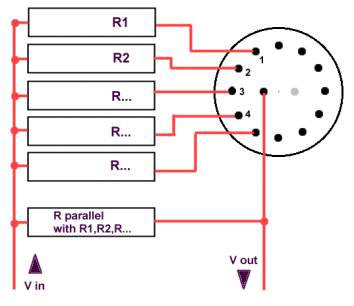it would be much easier to explain with a schematic, but to me, you need only one pole for a fixed resistor:
the common of the switch goes at one end of the original resistor, one end of each resistor on the switch goes to each position on the switch and the other end of the resistors are all connected together to the other end of the original resistor.
like this (without the parallel resistor

and for a potentiometer (not wired as a variable resistor), you would need 2 poles